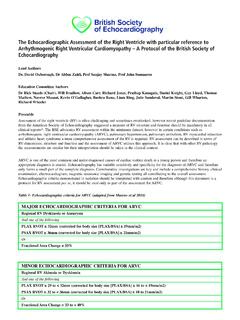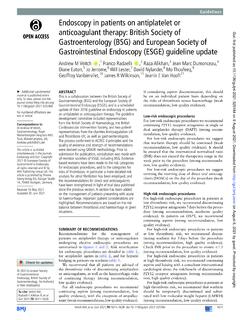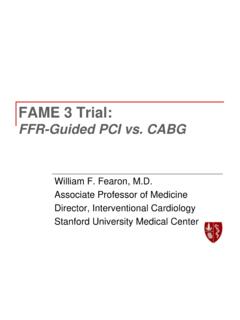Transcription of Clinical practice guidelines for the care of girls and ...
1 european Journal of 2017 european society of EndocrinologyPrinted in Great BritainPublished by Bioscientifica : practice guidelines for the care of girls and women with Turner syndrome: proceedings from the 2016 Cincinnati International Turner Syndrome MeetingClaus H Gravholt1,2, Niels H Andersen3, Gerard S Conway4, Olaf M Dekkers5, Mitchell E Geffner6, Karen O Klein7, Angela E Lin8, Nelly Mauras9, Charmian A Quigley10, Karen Rubin11, David E Sandberg12, Theo C J Sas13,14, Michael Silberbach15, Viveca S derstr m-Anttila16, Kirstine Stochholm1,17, Janielle A van Alfen-van derVelden18, Joachim Woelfle19.
2 Philippe F Backeljauw20 On behalf of the International Turner Syndrome Consensus Group*Departments of 1 Endocrinology and Internal Medicine, 2 Molecular Medicine and 3 cardiology , Aarhus University Hospital, Aarhus, Denmark, 4 Department of Women s Health, University College London, London, UK, 5 Department of Clinical Epidemiology, Leiden University Medical Centre, Leiden, The Netherlands, 6 The Saban Research Institute, Children s Hospital Los Angeles, Los Angeles, California, USA, 7 Rady Children s Hospital, University of California, San Diego, California, USA, 8 Department of Pediatrics, Medical Genetics Unit, Mass General Hospital for Children, Boston, Massachusetts, USA, 9 Division of Endocrinology, Nemours Children s Health System, Jacksonville, Florida, USA, 10St Hubert s Island, New South Wales, Australia, 11 Connecticut Children s Medical Center, Hartford, Connecticut, USA, 12 Division of Psychology, Department of Pediatrics, University of Michigan, Ann Arbor, Michigan, USA, 13 Department of Pediatric Endocrinology.
3 Sophia Children s Hospital, Rotterdam, The Netherlands, 14 Department of Pediatrics, Dordrecht, The Netherlands, 15 Department of Pediatrics, Doernbecher Children s Hospital, Portland, Oregon, USA, 16V est liitto Fertility Clinics, Helsinki, Finland, 17 Center for Rare Diseases, Department of Pediatrics, Aarhus University Hospital, Aarhus, Denmark, 18 Department of Pediatric Endocrinology, Radboud University Medical Center, Amalia Children s Hospital, Nijmegen, The Netherlands, 19 Department of Pediatric Endocrinology, Children s Hospital, University of Bonn, Bonn, Germany, and 20 Cincinnati Children s Hospital Medical Center, University of Cincinnati College of Medicine, Cincinnati, Ohio, USA*(Details of the International Turner Syndrome Consensus Group is presented in the Summary section)AbstractTurner syndrome affects 25 50 per 100,000 females and can involve multiple organs through all stages of life, necessitating multidisciplinary approach to care.
4 Previous guidelines have highlighted this, but numerous important advances have been noted recently. These advances cover all specialty fields involved in the care of girls and women with TS. This paper is based on an international effort that started with exploratory meetings in 2014 in both Europe and the USA, and culminated with a Consensus Meeting held in Cincinnati, Ohio, USA in July 2016. Prior to this meeting, five groups each addressed important areas in TS care: 1) diagnostic and genetic issues, 2) growth and development during childhood and adolescence, 3) congenital and acquired cardiovascular disease, 4) transition and adult care, and 5) other comorbidities and neurocognitive issues.
5 These groups produced proposals for the present guidelines . Additionally, four pertinent questions were submitted for formal GRADE (Grading of Recommendations, Assessment, Development and Evaluation) evaluation with a separate systematic review of the literature. These four questions related to the efficacy and most optimal treatment of short stature, infertility, hypertension, and hormonal replacement therapy. The guidelines project was initiated by the european society of Endocrinology and the Pediatric Endocrine society , in collaboration with the european society for Paediatric Endocrinology, the Endocrine society , the european society of Human Reproduction and Embryology, the American Heart Association, the society for Endocrinology, and the european society of cardiology .
6 The guideline has been formally endorsed by the european society of Endocrinology, the Pediatric Endocrine society , the european society for Paediatric Endocrinology, the european society of Human Reproduction and Embryology and Correspondence should be addressed to C H Gravholt Email 2017 european society of Endocrinology177:3G1 G70C H Gravholt and othersTurner syndrome Clinical practice guideline177 practice GuidelineDownloaded from at 05/01/2022 06:47:40 PMvia free accessEuropean Journal of Endocrinology177:3G2 Clinical practice GuidelineC H Gravholt and othersTurner syndrome Clinical practice Endocrine society .
7 Advocacy groups appointed representatives who participated in pre-meeting discussions and in the consensus Summary of recommendationsThe recommendations (R) are worded as recommend (strong recommendation) and suggest (weak recommendation). We formally graded only the evidence underlying recommendations for therapeutic choices. The quality of evidence behind the recommendations is classified as very low ( ), low ( ), moderate ( ) and strong ( ). See further section Summary of methods used for guideline development.
8 Diagnosis and geneticsR We recommend considering a diagnosis of TS in phenotypic females with a karyotype containing one X chromosome and complete or partial absence of the second sex chromosome, associated with one or more typical Clinical manifestations of TS ( ).R We recommend against considering a diagnosis of TS in females with one X chromosome and a deletion distal to Xq24 on the other X chromosome, and in women over the age of 50 years with less than 5% 45,X mosaicism ( ).
9 R We suggest that the new general surveillance management guideline applies to TS patients with any karyotype ( ).R We recommend to consider testing for Turner syndrome (TS) in a female with typical signs (Table 2) ( ).R We recommend gonadectomy in all female individuals with Y chromosome material identified on standard karyotyping ( ).2. Growth and pubertyR We recommend initiating growth hormone (GH) treatment early (around 4 6 years of age, and preferably before 12 13 years) in the following circumstances.
10 The child already has evidence of growth failure ( , below 50th percentile height velocity (HV) observed over 6 months in the absence of other treatable cause of poor growth), the child is already short or has a strong likelihood of short stature ( , short parents and short predicted adult height or already pubertal at the time of diagnosis) ( ).R We recommend using a GH dose of 45 50 g/kg/day or mg/m2/day ( IU/m2/day) in most instances, increasing to 68 g/kg/day ( mg/m2/day) if adult height potential is substantially compromised ( ).







